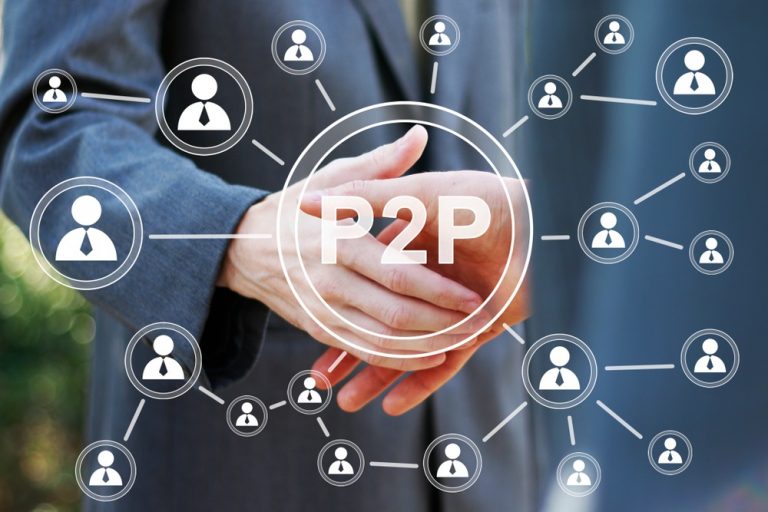What is P2P Lending?
Let’s start at the beginning. Peer-to-Peer (P2P) lending, also known as social lending, is a financial innovation that connects individuals looking to borrow money with people willing to lend, all through online platforms. In essence, it’s like the Airbnb or Uber of the lending world, where you don’t need a bank as an intermediary.
P2P lending is all about people helping people. Borrowers can access funds quickly, often at competitive interest rates, while lenders can potentially earn attractive returns on their investments. It’s a win-win for both parties involved.
A Brief History of P2P Lending
P2P lending might sound like a recent development, but it’s been around since the early 2000s. The concept gained traction with the launch of platforms like Prosper and LendingClub in the United States. Since then, P2P lending has grown into a global phenomenon. Its success is attributed to the internet’s reach and the desire for an alternative to traditional banking systems.
How Does P2P Lending Work?
Now, let’s dive into the mechanics of P2P lending and see how it operates from both the borrower’s and investor’s perspectives.
The Borrower’s Perspective
If you’re in need of a loan, P2P lending provides a user-friendly and efficient solution. Here’s how it works for borrowers:
1. Application: To get started, you complete an online application on a P2P platform. This application will include information about the loan amount, purpose, and your creditworthiness.
2. Credit Check: The platform will assess your creditworthiness based on your application and credit history.
3. Listing: If approved, your loan request is listed on the platform for potential investors to review.
4. Funding: Individual investors, like you and me, can choose to fund your loan partially or in full.
5. Repayment: You make monthly payments, including both principal and interest, directly to the P2P platform. The platform then distributes these payments to your lenders.
The Investor’s Perspective
On the flip side, if you have some extra cash and want to earn a return on your investment, P2P lending offers a unique opportunity. Here’s what it looks like from an investor’s point of view:
1. Registration: You create an account on a P2P lending platform and deposit your funds.
2. Browsing Loans: You browse through various loan listings and decide which ones to invest in.
3. Diversification: To spread risk, it’s wise to invest in multiple loans, each with small amounts.
4. Returns: As borrowers make their monthly payments, you receive a portion of the repayment, including both principal and interest.
5. Default Management: If a borrower defaults, the platform handles the collection process on your behalf.
The Role of P2P Platforms
P2P lending platforms serve as the glue that holds the borrowing and lending processes together. They play a pivotal role in ensuring smooth transactions and reducing risk. Here’s what they do:
• Credit Scoring: They assess the creditworthiness of borrowers, helping lenders make informed decisions.
• Loan Facilitation: They facilitate the lending process, from application to repayment, making it hassle-free for all parties involved.
• Risk Management: They manage risk by implementing mechanisms like diversification and collections.
• Fees: P2P platforms charge fees, typically from borrowers and sometimes from investors, to sustain their operations.

Benefits of P2P Lending
P2P lending offers a range of advantages for both borrowers and investors. Let’s take a closer look:
For Borrowers
1. Accessibility: P2P lending provides access to funds for people who may not qualify for traditional bank loans.
2. Competitive Rates: Borrowers can often secure loans at competitive interest rates.
3. Quick Approval: The online nature of P2P lending means faster approval and funding.
4. Personalized Loans: Borrowers can often secure loans at competitive interest rates.
For Investors
1. Diversification: Spread your investment across multiple loans to reduce risk.
2. Attractive Returns: P2P lending can yield higher returns compared to traditional investments.
3. Control: You choose which loans to invest in, giving you control over your portfolio.
4. Social Impact: Some investors appreciate the idea of directly helping individuals and small businesses.
Risks to Consider
While P2P lending has its merits, it’s not without risks. Here’s what you need to be aware of:
1. Credit Risk: Borrowers may default on their loans, leading to losses for investors.
2. Lack of Regulation: P2P lending is not as heavily regulated as traditional banking, which can pose risks.
3. Illiquidity: Your money may be tied up in loans for an extended period, making it less accessible.
4. Platform Risk: The platform itself could face financial or operational challenges, affecting your investments.
Tips for a Successful P2P Lending Experience
To make the most of P2P lending, whether you’re a borrower or an investor, here are some valuable tips:
• Diversify: Don’t put all your eggs in one basket. Spread your investments or loan requests across multiple options.
• Research: Take the time to research borrowers or loans before investing. Understand their financial situation and purpose for the loan.
• Stay Informed: Keep up with industry news and changes in regulations to make informed decisions.
• Have Realistic Expectations: Understand that not all loans will be repaid, and returns may vary.
• Use Reputable Platforms: Choose P2P lending platforms with a good track record and reputation.
Legal and Regulatory Aspects
P2P lending regulations vary from country to country. Some regions have embraced it, while others have imposed restrictions. It’s crucial to understand the legal framework in your area and comply with all relevant regulations.
Conclusion
In the world of finance, Peer-to-Peer (P2P) lending stands out as a revolutionary concept that empowers individuals to connect, lend, and borrow without traditional intermediaries. It’s a win-win situation, offering accessibility and competitive rates for borrowers while providing diversification and attractive returns for investors. However, it’s not without its share of risks and challenges, and staying informed and diversified is key to success.

